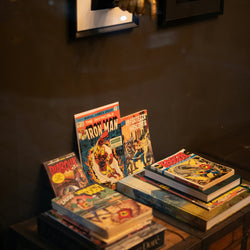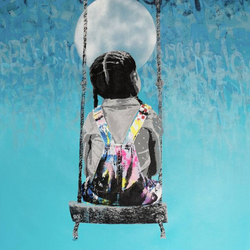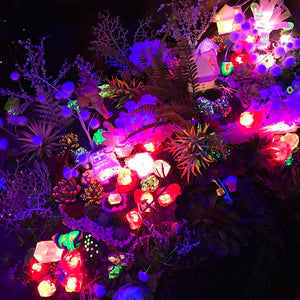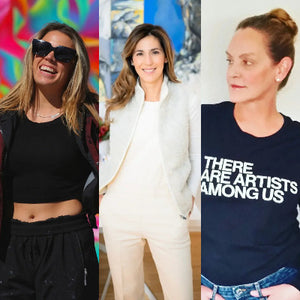Collective Conversations: Exploring identity through street art with Bollee Patino
Published April 28, 2025
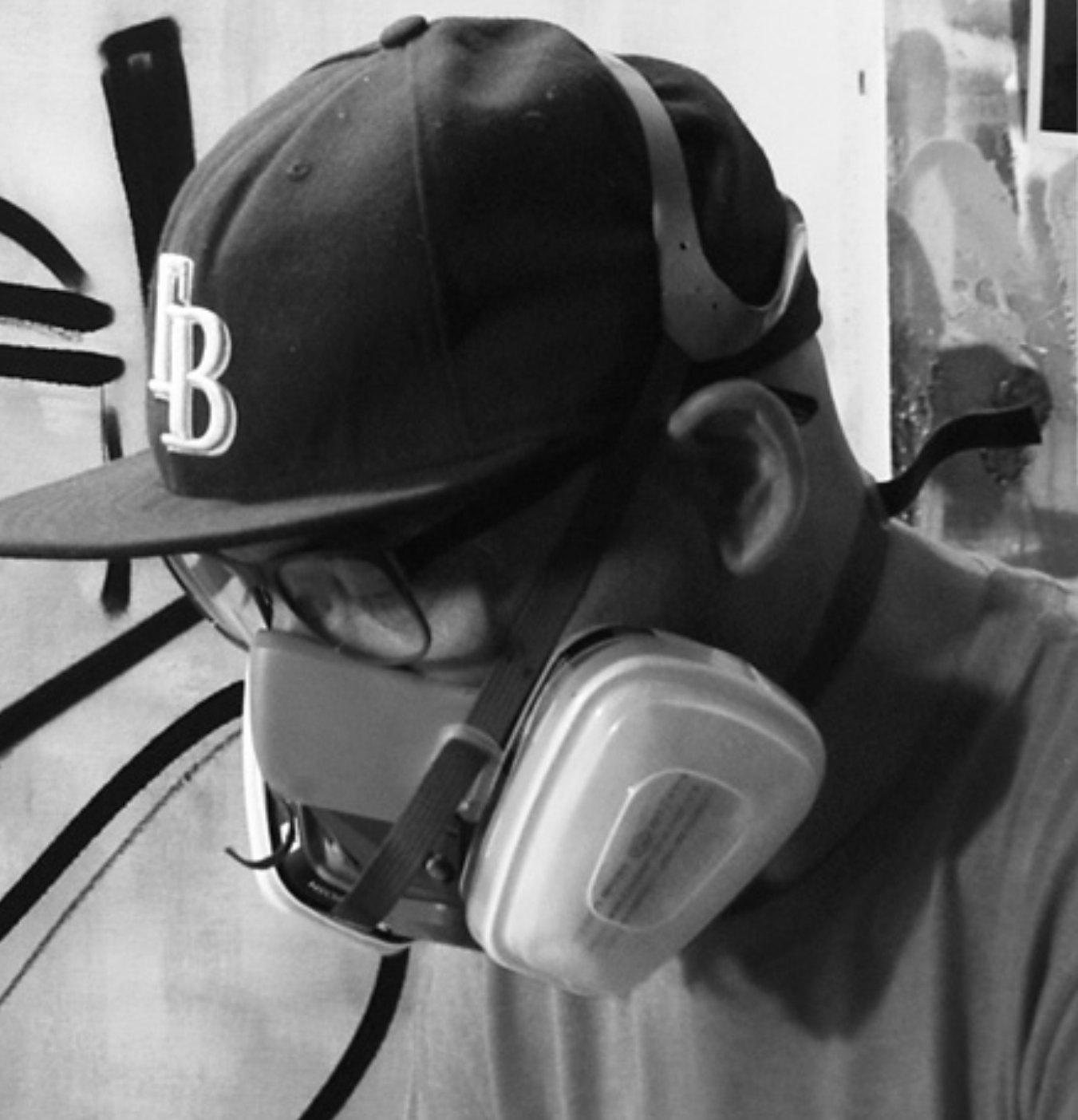
“Make your own luck” is a common mantra hidden among the bursts of color in Bollee Patino’s works. It doesn’t take much time talking to the artist to realize that he can practice what he paints. Patino has followed his muse down a winding path that took him from graffiti on the streets of Tampa, Florida to a high-profile career in graphic design and marketing. In the end, Patino came full circle and devoted himself to painting full-time, inspired by the guerrilla art of his youth. Today, you can find his coy characters and splashy backgrounds on the covers of magazines, the walls of high-end NYC hotels and in galleries around the world. We sat down to talk about the roots of it all, and how Patino keeps his inner child alive through art.
Creator Collective: What’s the first piece of art that you remember seeing that really moved you? Maybe something that made you say, “I want to do that when I grow up”?
Bollee Patino: Yeah. So maybe I was a teenager, maybe a little bit younger. In my neighborhood, I had two friends who moved from New York. And you know, got to know them a little bit better and next thing you know they were like, “I have these really cool videos” and it was people in New York tagging and doing graffiti. And I was just like, “Whoa. This is the coolest thing ever.” I only know Tampa, never left Tampa but to see the trains and subways and these guys just out in the city doing these really cool pieces, I was like, “Yeah, that's my jam. That's what I want to do.” So then I got hooked. Researching and looking up and just being a fan, that's how I really got into it. Then of course, courage, right? I'm going to go out and do it. So I was a graffiti kid all through Tampa just trying to figure out how to do it. I linked up with other kids in the neighborhood who were into it that's really what got me into art was just these videos that people that I knew who came down from New York were like hey, check this out and the rest was history. I was just a big fan of it. Books and videos, and at that time there was no Internet. It wasn't like you could jump on a computer and absorb everything. You had to really find people who were into it and had either the photos or these magazines and these kind of things so you really had to invest in finding out who is who and who is doing what.
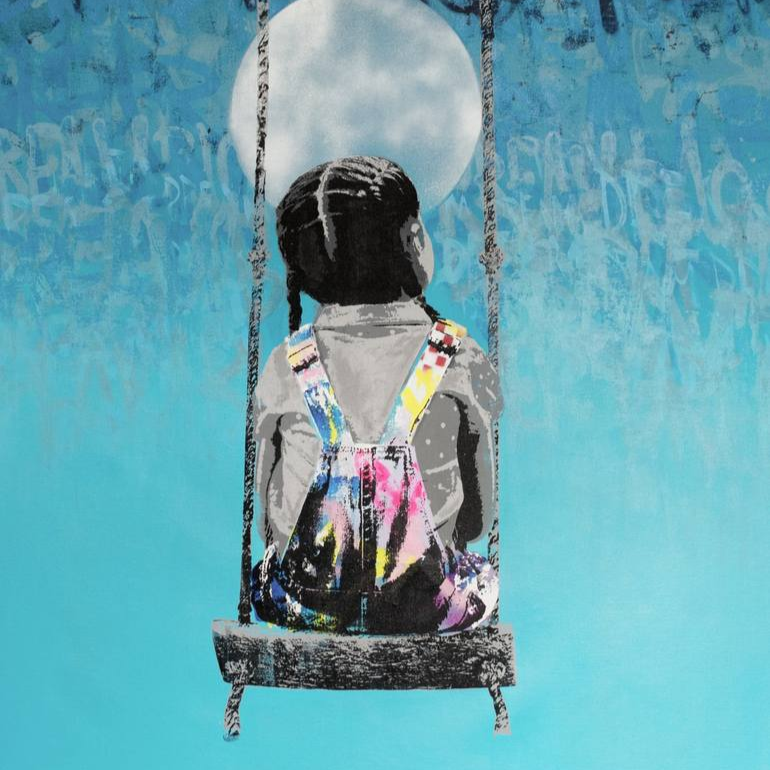
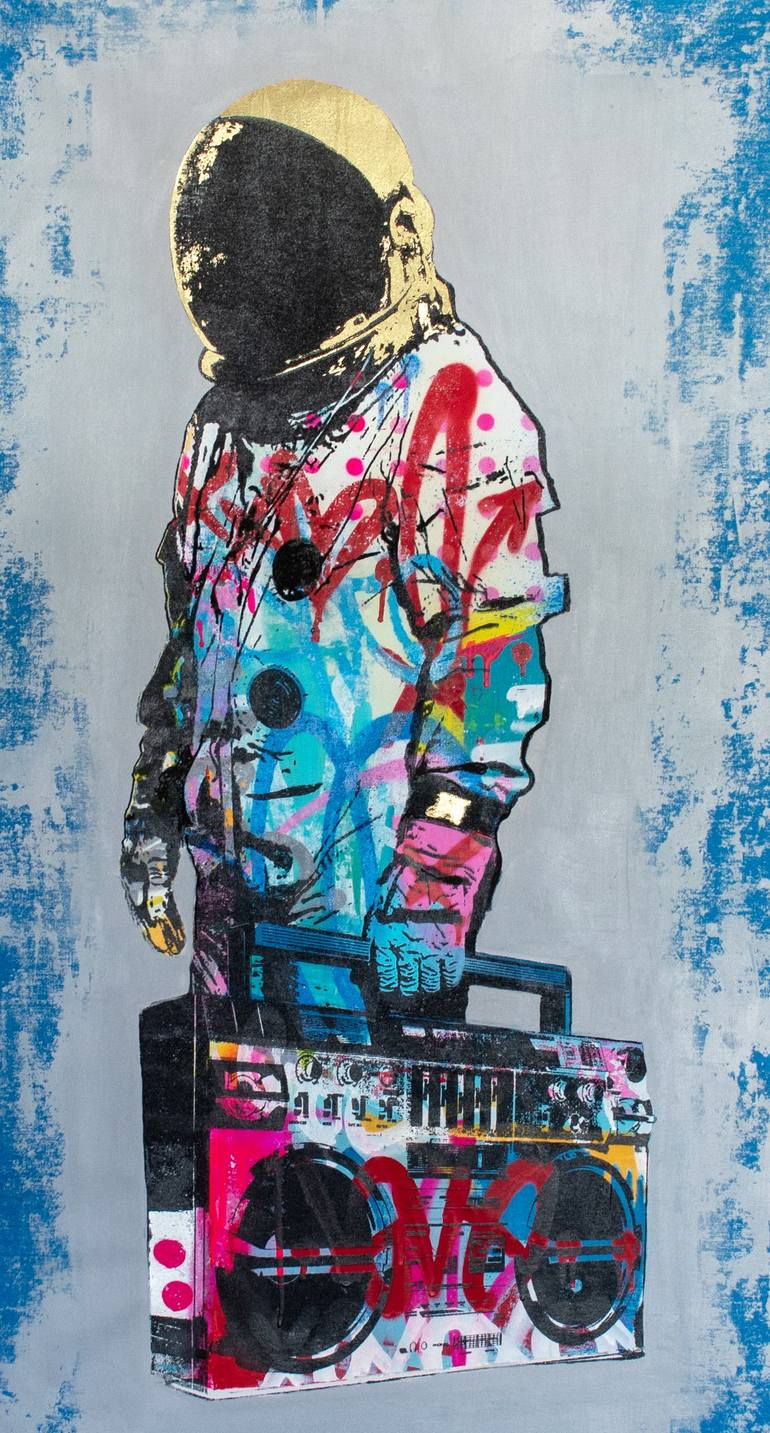
CC: That kind of digging really is a lost art these days, and it’s almost central to graffiti and hip-hop in general, I think. Having to search through record stores for the perfect beat or hunting for tags.
BP: Yeah, that's really what opened it up. Graffiti led to the DJs so I was like okay, this is amazing. Then the next thing you know, hip-hop. So I was a hip-hop head. I really got into it, I loved it. I just kind of absorbed the four elements if you would. Excluding rapping, because that was not my jam. I played around with turntables and I was doing graffiti so I was like yeah, I love this type of culture and this vibe and it is really what set me on the tone that I'm on now, I guess.
CC: And this was in your teens?
BP: Yeah, a kid in my teens, maybe early 20s. But by that time it was like, “Okay, I've got to do something productive.” So I went to design school and then that led me to graphic design. I carried over the creativity to a more productive corporate setting, if you will. Yeah, so I did that for a long time and climbed the corporate ladder. I kind of stopped doing art for a long period there. It wasn't until maybe 7 to 10 years ago I was like, “Hey, you know, I'm kind of burnt out.” I really loved being creative and painting so I was like, “I'm going to start painting again as a hobby.” Get back into it, something to decompress from the 9 to 5. And then one piece led to another and I was like, “This is very cool.”
CC: Was there much of a scene in Tampa at the time that you were coming up?
BP: There really wasn't much of a scene. The scene in Tampa I think was, there was a lot of people doing graffiti so would you would have to find your spot. The thing about Tampa is they were very quick to paint over it or clean it so things wouldn't stay up long. You didn't really have that Chicago or New York or LA feel where it's just layered. Years and years of people putting up their mark. So there was a scene but it wasn't a scene that would stay. It would come and go, come and go. It just wasn't that type of city. So I definitely wasn't one of the people who got it started here for sure, definitely not. But I would be one of those kids going out and doing stuff here and there. Trying to see how long it stays up. A week, maybe two if you're lucky. That was the thing, it was very frowned on here so it was hard to do some things in certain areas. I think there was a scene but not like what you would expect out of a larger metropolitan area.

CC: I can draw that direct line from the graphic design work you were doing to the paintings you do now. If there’s any kind of through line, it’s the color and the characters you choose to put in the foreground. Most of the time, they’ve got their faces turned away or obscured behind a helmet. The viewer has a little bit of work to do to figure out their story. Was that a conscious choice?
BP: Definitely so. My characters are a little bit of myself growing up. Things I wanted to be or pieces that I am, people I've known. Those kinds of things. I always try to create a tone of the underdog. Someone who's a little shy and is about to blossom, taking a venture, being courageous. That introvert’s view of what you want to be as an extrovert. The face turning away is kind of the shyness right before you explode. I wanted to make sure other people can either see themselves or people that they know in the painting.
If you paint faces you actually create an identity with that painting so it's like, “I don't know that person.” But if you turn your their head or cover certain features it gives the silhouette of “that looks like so and so” or “that looks like my child, my brother, my sister.” It allows people to identify with the piece and not necessarily focus on the identity or who that actual character is. It's a combination of those things. I really just want people to connect with more the story and the figure and relate it to something personal versus a photograph of someone. I just want to remove the identity and have people put their own identity in the painting.
CC: And then there’s all that color around them. It’s like a visual representation of potential.
BP: Correct. It's like, the world is chaotic. I really like this chaos in the background, but chaos can be beautiful. If you really look at it or look at the journey that got you to where you are it all layers out perfectly. Although it looks very random and it looks a bit chaotic, I'm trying to create this pleasing image of no matter how much noise is around you, you still can soar. You still can achieve whatever your goals are. So that's kind of the peace that I think I try to convey the most. To keep it even simpler: I just love walls that have years of layers and layers of paint. After a while some of these walls around the cities, you just see hundreds of people who have put their mark but after a while it all starts to layer beautifully with the different colors and different ideas. That's why some words may be a little washed out where other ones are a little more visible. I think it's a combination of that, this journey if you would.
CC: I guess that leads us to talking about process. Do you put on several layers to replicate that effect, like years worth of art being painted over?
BP: Yeah, so I layer it. I don't really have a plan and I don't really know what the painting is going to end up being. It's so unplanned that I don't even really know what character I think it’s going to be. I don't start off a painting saying it's going to be this character or that character, I just start painting because I really enjoy the painting in general so I will start with a base layer, add to it, add another layer, just keep going until I feel that the composition is good. Then I kind of take a step back and one, does it deserve a character? Two, what kind of feel does it have? Because each of my characters has a unique story. … It's kind of like life, right? You kind of just go and work with what you get and you build upon it and eventually you get to where you want to be or the next step to where you're going. That's just how I do it. Sometimes it is great, sometimes I literally will paint myself into a corner. Like, I don't know what to do next. And I'll shelve that for a while and come back to it. It's somewhat of a puzzle figuring it out, layering it, what works or doesn't work. To have some type of story at the end is the reward I get.
No two artists’ journeys are alike. Creator Collective is a hub for creativity that can move along with you, no matter where you are on the path. Curious about underground art, tech trends, and what’s happening in the global creative community? Us too. Join the conversation and fan the flames.
Create with us.

